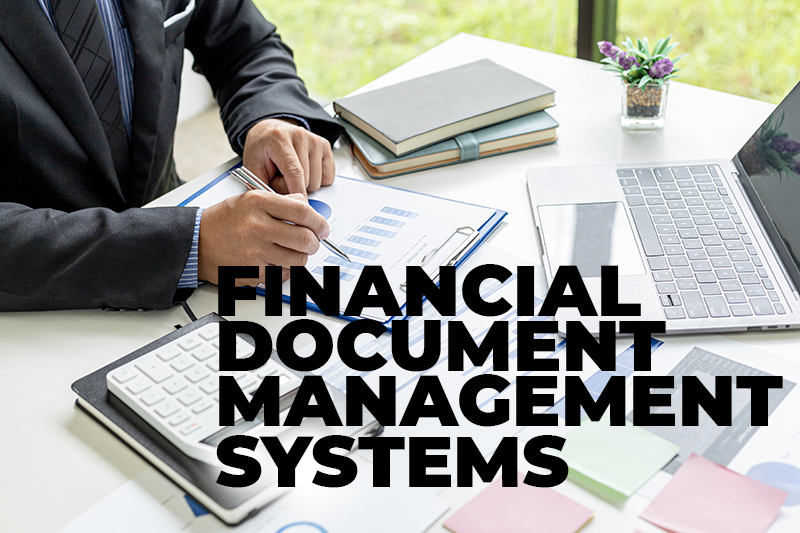When it comes to the banking, financial services and insurance (BFSI) sector, every single transaction is of great significance. Organizations functioning in the BFSI sector need to rely on a great deal on information such as loan applications, tax returns, correspondence, appraisals and other paperwork. As part of the routine financial transactions, new records may need to be created for new transactions or clients. Financial institutions need to ensure the accuracy and completeness of these transactions while keeping all the client- and business-related data secure. In order to keep the record of each financial transaction secure, financial institutions invest in Document Management Systems (DMS). In fact, the banking industry is a major market with a strong potential in technology investment. Adopting automation technologies can help banks reduce operational costs and perform financial transactions more efficiently. Innovative technologies are utilized by document conversion services to optimize document scanning and ensure the best scanning results for their clients.
What Do Document Management Systems Do?
Over the last few decades, all forms of documentation and document management have gone digital across diverse sectors. A cloud-based, secure and scalable document management system in any financial institution is important for storing and accessing information related to transactions online. Despite this evolution in digital means of document management, a handful of traditional banking institutions still continue to manage internal and external communications through paper-based means. Besides, storing high-priority documents using obsolete DMS software also lead to accessibility issues.
With the huge volume of transactions carried out by financial institutions on a routine-basis, it is very important to make efforts to optimize their documentation and transaction record keeping. With appropriate document management systems (DMS) in place, financial institutions can significantly reduce costs and other delays associated with managing and sending documents as statements and notifications. Smooth compliance, streamlined financial workflow and the capability to maintain an electronic audit trail are some of the other related benefits of document management systems.
Top Trends for Document Management Systems (DMS)
Flexibility of usage and smooth integration with the financial infrastructure are among the top features preferred by financial institutions in their document management systems. The use of state-of-the-art DMS enables financial institutions to stand out from the competition. Here discussed are some of the top DMS trends in the financial sector –
- Cyber security Control Software – Any document management system should provide protection against cyber-attacks on the sensitive data maintained on the financial institution’s mainframe. Document cyber security control providers have recognized this market need and evolved into dedicated providers of cyber security features for banking DMS. Some of the top features include –
- File extension control – Preventing or allowing certain file types and extensions is one of the top cyber security features that DMS systems must have. The file header is matched against a list of all upload files to perform this check.
- Multi-factor authentication (MFA) – There are several methods or strategies of multi-factor authentication. Google Authenticator is often a go-to option for financial institutions. There should be the option for MFA token expiration to be personalized according to the institutions policy guidelines.
- Encryption – An extra layer of protection is added with QueryString encryption to DMS for transferring information passed between entities.
- Enterprise Process Automation – Document management software typically consists of specialized computer programs for Robotic Process Automation (RPA). By using RPA-optimized programs, repetitive tasks in the documentation and record tracking workflow gets automated with a single click. In addition, these program components also learn how to perform some of these business processes by observing manual handling of tasks.
- Cloud-based Collaboration – The usage of cloud-based DMS is going through a paradigm shift, with a majority of the financial institutions changing to this way of doing business. Cloud-based collaboration between merged conglomerates or small banking institutions opens up new possibilities for enhanced growth and portfolio expansion. As there is a continuous need to have access to a closed network for internal communications is important, partners situated in far apart countries can also collaborate on documentation exchange and tracking of transactions with easiness.
- Real-Time Indexing – All types of documents captured within a document management system must be correctly summarized and categorized in a well-defined manner. Scanned documents, electronic records of transactions, emails – all come under the purview of this requirement and need to be ingested into the DMS with correct accuracy. This allows admins to retrieve these documents from the systems in an easy manner. While legacy systems involved manual entry of each document by a data entry executive, more advanced document management software indexes documents as and when they are entered.
- Business Continuity Strategies – Maintaining a sense of continuity between various business processes is a challenging task for the financial sector. Therefore, financial businesses are consistently investing towards ensuring business continuity by setting up an audit team solely responsible for this aspect of each department. In addition to the business continuity plan, business-critical applications require a disaster recovery plan, although they more or less coincide in terms of strategy. This can be performed via systematic testing and prior approval from audit teams looking after workflow capabilities, incident tracking and reporting, disaster recovery, and automation separately.
In the current financial market scenario, there are several types of document management software available, each offering something unique from the other. Automation, data mining, cloud integration, and other aspects all cumulatively result in a dependable document management system. For financial institutions, automating the document management systems can help streamline business processes and improve efficiency, thereby reducing costs. By relying on advanced document scanning solutions, financial institutions can help digitize their processes and records, thereby optimizing and improving operational efficiency.




